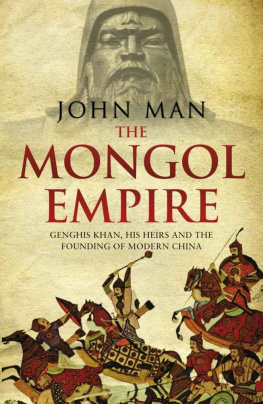THE
GUTENBERG
REVOLUTION
The story of a genius and an
invention that changed the world
John Man
TRANSWORLD PUBLISHERS
6163 Uxbridge Road, London W5 5SA
www.transworldbooks.co.uk
Transworld is part of the Penguin Random House group of companies whose addresses can be found at global.penguinrandomhouse.com

First published in Great Britain in 2002 by Review
an imprint of Headline Book Publishing
Bantam edition published 2009
an imprint of Transworld Publishers
Copyright John Man 2002
John Man has asserted his right under the Copyright, Designs and Patents Act 1988 to be identified as the author of this work.
Picture Acknowledgements
: page from the Hypnerotomachia Poliphili by Francesco Colonna, 1499.
This book is a work of non-fiction.
A CIP catalogue record for this book is available from the British Library.
Version 1.0 Epub ISBN 9781409045526
ISBN 9780553819663
This ebook is copyright material and must not be copied, reproduced, transferred, distributed, leased, licensed or publicly performed or used in any way except as specifically permitted in writing by the publishers, as allowed under the terms and conditions under which it was purchased or as strictly permitted by applicable copyright law. Any unauthorized distribution or use of this text may be a direct infringement of the authors and publishers rights and those responsible may be liable in law accordingly.
24681097531
Contents
Appendix I The 42-Line Bible:
A Possible Balance Sheet
Appendix II German Printers Abroad:
The First Wave
For Dushka
About the Author
John Man is a historian and travel writer with special interests in China, Mongolia and the history of written communication. His Gobi: Tracking the Desert was the first book on the subject in English since the 1920s, while Alpha Beta deals with the roots of the Roman alphabet. On China and Mongolia, he has written Genghis Khan, Attila the Hun, Kublai Khan, The Terracotta Army and The Great Wall. In 2007 he was awarded Mongolias prestigious Friendship Medal for his contribution to MongolUK relations. His latest book, The Leadership Secrets of Genghis Khan is now available from Bantam Press.
Also by John Man
GOBI
ATLAS OF THE YEAR 1000
ALPHA BETA
GENGHIS KHAN
ATTILA THE HUN
KUBLAI KHAN
THE TERRACOTTA ARMY
THE GREAT WALL
THE LEADERSHIP SECRETS OF GENGHIS KHAN

A note on typefaces
The following paragraph refers to the printed edition from which this ebook was created. Any further reference to typefaces used in this book also refers to the printed edition.
An expert eye will notice that this book uses three typefaces. It is my fault for wanting something that suggested a flavour of early printing. The first typefaces were the Germanic, Gothicstyle, black-letter texturas, which were hard to read for lay-people then and almost illegible in these secular times. They were replaced in Italy, and then everywhere else outside Germany, by styles derived from Roman inscriptions and Carolingian hand-writing. One of these styles was cut especially for the extraordinary work mentioned in Chapter 9, Hypnerotomachia Poliphili. The typeface was revived in the 1920s and named Poliphilus, which gave me the chance to use a digitised version for this book (Poliphilus 12/15: 12-point typesize, 15-point spacing). But my desire for a period feel was achieved at the expense of strict typographical unity. When Poliphilus was originally devised, there was not much variety of typeface: no italics, no bolds, no small capitals (the first Italic was cut in 1500, one year after HP appeared). The Italic Poliphilus used here, known as Blado, was devised on a sixteenth-century model along with the latter-day Poliphilus. Blado, which exists only in Italic, has no bold, nor a Roman bold equivalent. Nor does Poliphilus. So for both the Roman and Italic bold we opted for Bembo, which comes from the same stable as Poliphilus.

Gutenberg: an idealized image. There was no authentic portrait.
INTRODUCTION
The Third Revolution
O n a graph of human contact over the last 5,000 years, the line from grunt to e-mail is not a regular curve. It has four turning-points, each recording moments at which written communication flicked to a new level of speed and outreach. The first was the invention of writing, which allowed for the creation of big, enduring societies, with priestly elites. The second was the invention of the alphabet, which brought writing within the reach of ordinary people from the age of four. The fourth, which seems to be turning us into cells in a planet-sized brain, is the coming of the Internet.
This book is about the third turning-point, caused by the invention of printing with movable type, which burst on Europe, and then the world, 550 years ago. Printing changed things so utterly that it is hard to imagine a world without it. In fact, doing so is a futile exercise, because it would have happened anyway. All the elements needed were present across Europe in the fifteenth century not just in Germany or in Gutenbergs home town. What Gutenberg provided was that spark that fused these elements into a novelty. It was an invention waiting to happen.
The result, of course, was a new world of communication. Suddenly, in a historical eye-blink, scribes were redundant. One year, it took a month or two to produce a single copy of a book; the next, you could have 500 copies in a week (500 was an average print run in the early days). Distribution was still by foot or hoof, but that didnt matter. A copied book just sits there, waiting for readers, one by one; a successful printed book is a stone dropped in water, its message rippling outwards to hundreds, thousands, millions.
Hardly an aspect of life remained untouched. If rulers could bind their subjects better, with taxes and standardised laws, subjects now had a lever with which to organise revolts. Scholars could compare findings, stand on each others shoulders and make better and faster sense of the universe. Gutenbergs invention made the soil from which sprang modern history, science, popular literature, the emergence of the nation-state, so much of everything by which we define modernity.

To see a little of what Gutenbergs invention led to, take a look inside the international hall at the Frankfurt Book Fair where you will find the American and English publishers and several thousand others from over a hundred countries doing their best to express or inspire interest in 400,000 titles, all created since the previous fair. For tyro publishers, the sight of so much Wurst, coffee, beer and book-jackets is humbling. Authors should keep their illusions and steer clear.
, surfeited on the international hall:






















